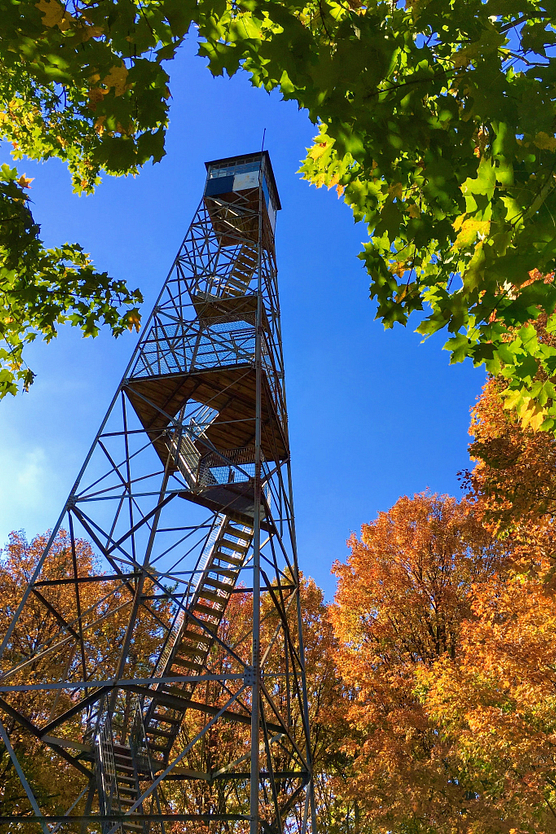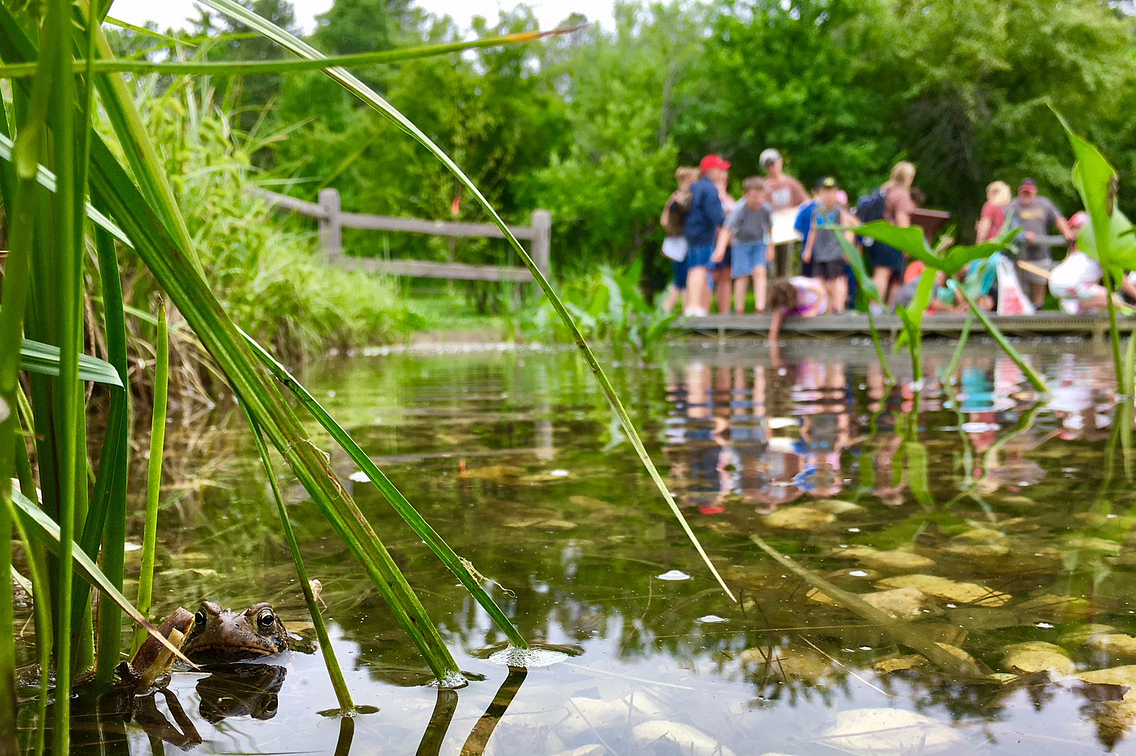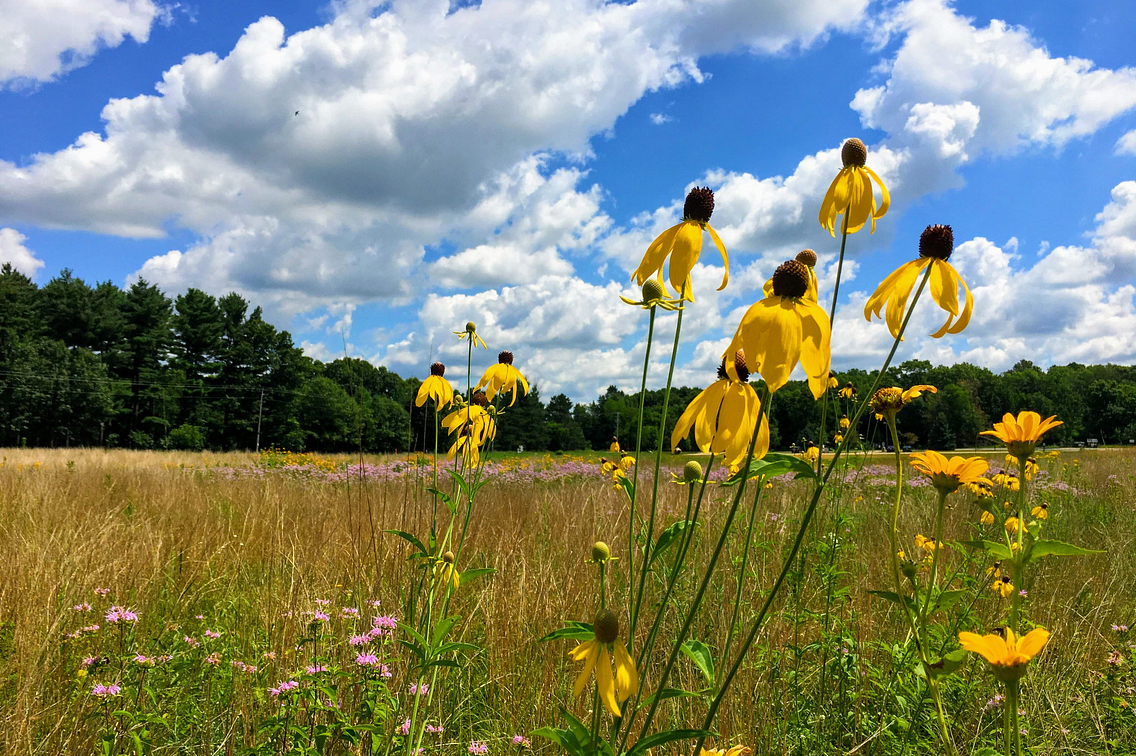Explore the Property
MacKenzie Center
Wildlife exhibit
A wildlife exhibit at MacKenzie houses live animals native to Wisconsin, including bison, deer, gray wolves, lynx, red fox and raptors. All of the animals in the exhibit were injured, orphaned or raised in captivity and cannot be released into the wild. The animals are cared for as part of an educational exhibit, providing students and the public an opportunity to see and learn more about the animals that are part of Wisconsin's ecological community.
 A Gray Wolf (Canis lupus) at the MacKenzie Center wildlife exhibit.
A Gray Wolf (Canis lupus) at the MacKenzie Center wildlife exhibit.The MacKenzie Center operates under a "hands-off" philosophy, only handling animals for transport or veterinary care. The MacKenzie Center does not accept injured, orphaned or sick wildlife from the public. Please contact a licensed wildlife rehabilitator if you find an injured or orphaned wild animal.
The wildlife exhibit grounds are the permanent home for these animals, and respect for their space is necessary for their health. Please do not tease or feed the animals, as they require specific dietary needs. Please stay behind the perimeter fences in the exhibit.
 The MacKenzie Center fire tower.
The MacKenzie Center fire tower.Observation tower
MacKenzie's 80-foot-tall fire tower has been relocated to MacKenzie from the Wisconsin State Fairgrounds in West Allis. The observation platform at 40 feet above the ground (the highest point accessible to the public) provides a good view of the MacKenzie property and surrounding countryside. This tower is not in active use, but gives visitors a feel for a method of fire detection that dates back to the beginning of the U.S. Forest Service in 1905. Please remember to use caution while climbing the tower.
Pond
MacKenzie's pond can be a great place to sit and listen to the call of songbirds, observe the tracks of animals or listen to frog calls in the spring and early summer. It is a wonderful resource to visit and learn about food webs, predator-prey relationships, adaptations of pond organisms and aquatic and terrestrial ecosystems. Resources are available to organized groups to facilitate these learning opportunities.
 A frog shelters itself in the sedges of the MacKenzie Center study pond.
A frog shelters itself in the sedges of the MacKenzie Center study pond.Prairies
There are many prairie restorations at the MacKenzie Center. The best place for visitors to see MacKenzie's prairie restoration efforts is at the south trail system parking lot, where hiking paths wind through a restored section of prairie. An interpretive panel helps identify the different prairie plants. Depending on the season, you may come across remnants of a prairie burn — an important component of prairie ecosystem restoration.
 One of many prairies on the MacKenzie Center property.
One of many prairies on the MacKenzie Center property.